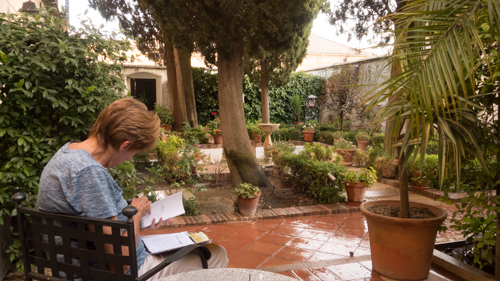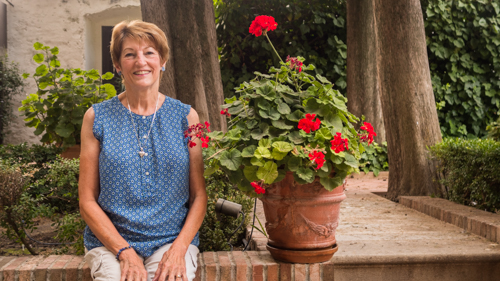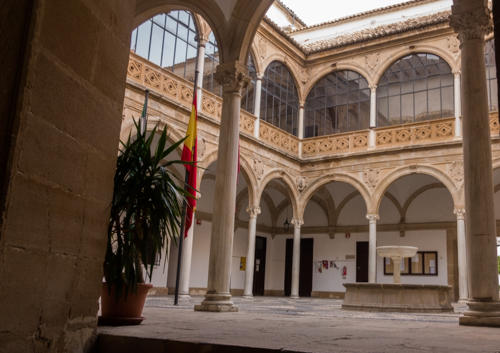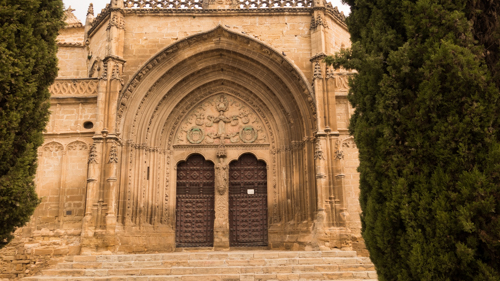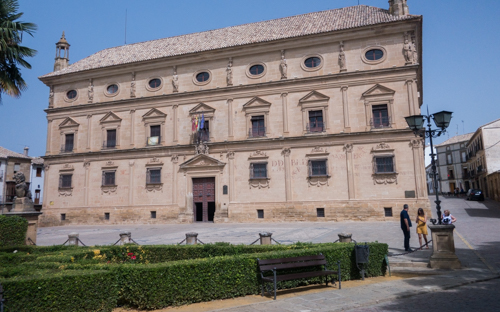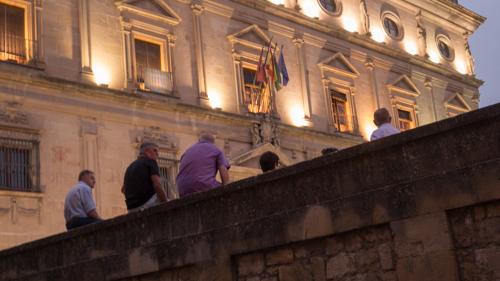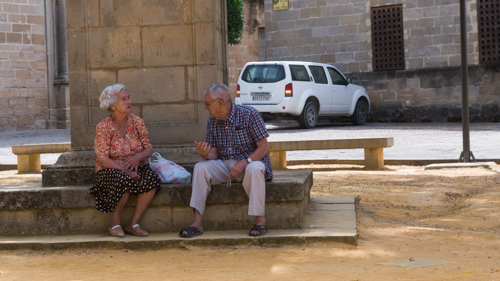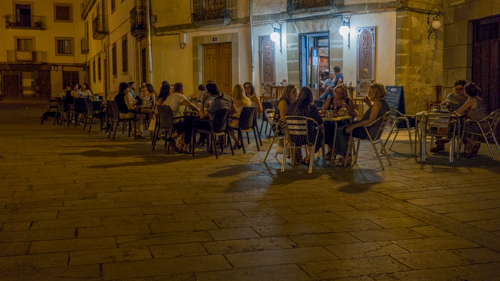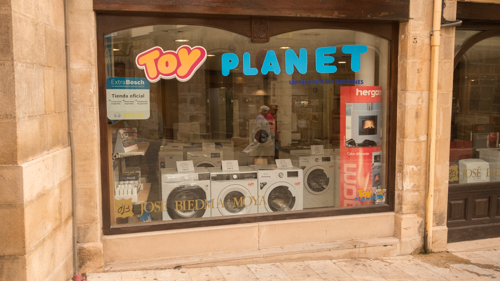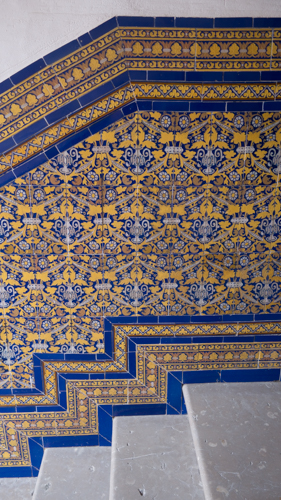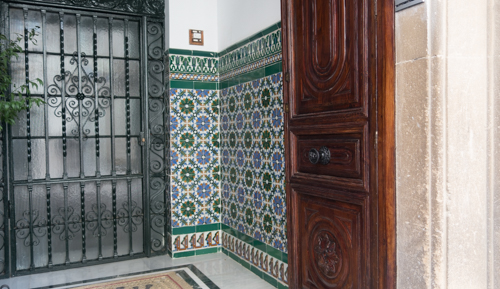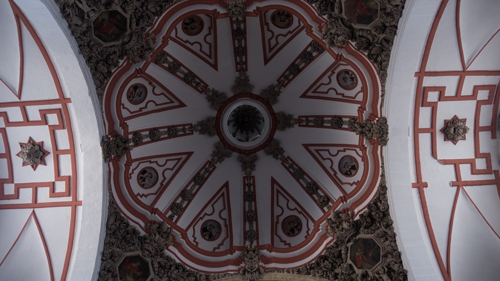Úbeda has an unusual claim to fame: in the middle of Moorish Spain, Úbeda has what many claim to be the most beautiful Renaissance square in all Europe, and has many other Renaissance buildings scattered throughout the city. We’ve been here a couple times before and knew that Úbeda belonged on our “Greatest Hits of Spain” tour.
I might mention that Úbeda also serves great tapas everywhere; that might have played into our decision to return.
How did it come about that these beautiful Renaissance buildings were built here? In the first half of the 16th century, Francisco de los Cobos, born in Úbeda, became secretary to the Spanish king. But as that king was out of the country almost all of his reign (he was also Emperor of the Holy Roman Empire, which took all his time), Cobos was effectively head of the Spanish government from 1533 to 1547. For some odd reason, during that time Cobos found a ton of money to build beautiful buildings in Úbeda. He decided to have those buildings designed by architects who built Renaissance buildings. Once he’d started, several other noble Úbeda families followed suit, trying to keep up with the neighbor; Cobos, that is.
Úbeda is a great place to just walk around, because on almost every street is a surprise building.
This is our third visit to Úbeda and we enjoyed it more than ever. For one thing, we did our homework: we had some excerpts from guidebooks, we visited the Oficina de Tourism, which gave us a terrific map and a guide to walks, with information about many of the buildings we’d see. Úbeda has something like 45 buildings classified as historical monuments and I think we saw at least three-quarters of them.
We stayed at a Parador here, too; our fourth of the trip. We opted for an upgraded room because we knew we could have a room with a small patio in a garden. This is where we relaxed:
The Renaissance Buildings of Úbeda
I could probably write a bit about each building we saw, but that would bore you and me, so I’ll just throw in some pictures.
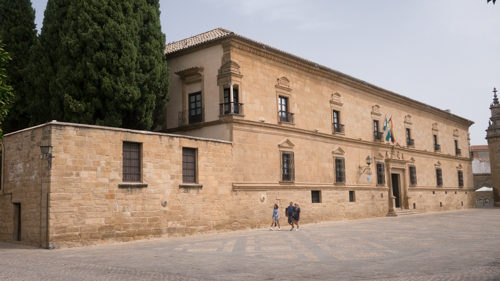
Our hotel. It was once the residence of the Bishop. Kind of makes you wonder about those vows of poverty…

The “chapel” that went with the Bishop’s house. The main church burned down centuries ago, but surely was much larger and more ornate than this.
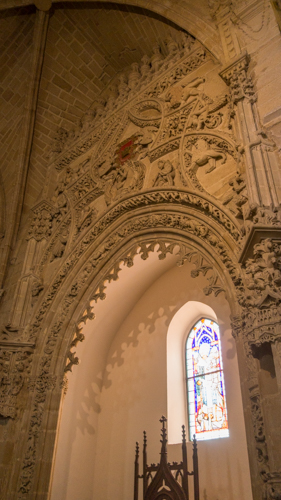
A chapel in San Pablo. San Pablo had Romanesque, Gothic and Renaissance aspects, from things being added to it from the 12th century to the 18th.
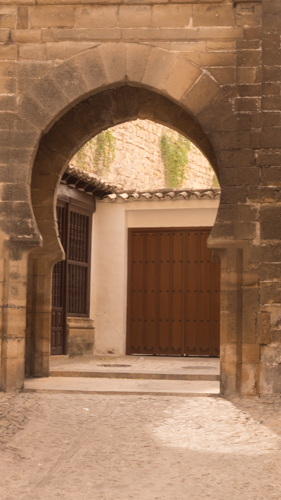
Úbeda wasn’t all Renaissance: this is a gate to the city. The horseshoe arch reveals its origin in the 10th or 11th century, when the Islamic Moors controlled this part of Spain.
Miscellanous Pictures of Úbeda
Sitting and talking is a Spanish tradition, particularly in hot weather when no one wants to be in their non-air-conditioned apartment.
Other Úbeda sights:
Úbeda was hot! The day we arrived was 100° and the next two days in the mid-90s. The whole Spain sojourn has been hot: the day we left Úbeda the forecast was for a high of 89°, which is the coolest day of the trip. We hoped for cooler weather in Segovia, our last stop!
As with the first three stops on our quick tour of Spain, we loved Úbeda. It’s not at all a tourist destination, just a beautiful place.

